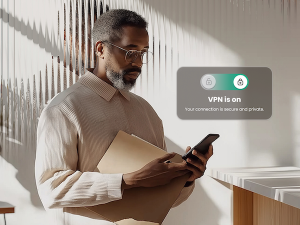Cryptocurrency offers exciting opportunities—but it’s also a favorite playground for scammers.
With the rapid rise of deepfake technology and deceptive AI-driven schemes, even seasoned investors can fall victim to fraud. According to McAfee’s State of the Scamiverse report, deepfake scams are on the rise, with the average American now encountering 2.6 deepfake videos daily. And younger adults (18-24) see even more – about 3.5 per day.
From fake investment opportunities to phishing attempts, bad actors are more sophisticated than ever.
The recent wave of Trump-themed meme coins—more than 700 copycats attempting to mimic the real thing—highlights just how rampant crypto scams have become. If even the president’s cryptocurrency isn’t safe from impersonators, how can everyday investors protect themselves?
By knowing the red flags, you can safeguard your money and personal data from crypto scammers.
Five Red Flags That Signal a Crypto Scam
1) Too-Good-To-Be-True Promises
Scammers often lure victims with guaranteed returns or impossibly high profits. If an investment promises “risk-free” earnings or sounds like a financial miracle, run the other way—legitimate investments always carry some level of risk.
Example: A Ponzi scheme disguised as a crypto investment fund may claim to offer “10% daily profits” or “instant payouts.” In reality, they use new investors’ money to pay early participants—until the scam collapses.
2) Celebrity Endorsements That Don’t Add Up
Fraudsters frequently impersonate public figures—from Elon Musk to Donald Trump—to promote fake coins or crypto investments. The explosion of Trump-themed meme coins shows how easily scammers exploit famous names. Even if a project appears linked to a well-known figure, verify through official channels.
Example: A deepfake video featuring a celebrity “endorsing” a new crypto token. McAfee’s research found that nearly 3 deepfake videos per day are encountered by the average American, many of them tied to scams.
3) Fake Exchanges & Wallets
Scammers often set up fraudulent crypto exchanges or wallet apps that look legitimate but are designed to steal your money. They might advertise low fees, special bonuses, or exclusive access to new coins.
How to Protect Yourself:
✔️ Always use well-established exchanges with a proven track record.
✔️ Look for HTTPS encryption and verify the URL carefully.
✔️ Research if the platform is licensed and regulated.
4) Pressure to Act Fast
Scammers thrive on urgency. They’ll push you to act immediately before you have time to think critically. Whether it’s a limited-time pre-sale or a “secret investment opportunity,” don’t let fear of missing out (FOMO) cloud your judgment.
Example: “Only 10 spots left! Invest now before prices skyrocket!”—Classic scam tactics designed to trigger impulsive decisions.
5) Requests for Upfront Payments or Private Keys
No legitimate crypto project will ever ask for:
- Your private keys or wallet seed phrase.
- An upfront fee before you can “withdraw” funds.
- Payment via gift cards or wire transfers.
Example: A fake customer support email pretending to be from Coinbase, asking you to confirm your wallet password—this is a phishing attempt!
How to Stay Safe from Crypto Scams
✅ Do Your Research: Always Google the project’s name + “scam” before investing.
✅ Check Regulatory Status: See if the platform is licensed (DFPI, SEC, or other regulators).
✅ Verify Official Websites & Socials: Scammers create lookalike websites with small typos—double-check URLs!
✅ Use Cold Storage: Store your assets in a hardware wallet to protect against hacks.
✅ Use tools like McAfee+: To monitor for potential scams and get warnings for potential deepfakes and other scam red flags.
Crypto offers incredible potential—but with great opportunity comes risk. Scammers are always evolving, using deepfake videos, phishing, and fraudulent investment schemes to trick even the savviest investors. By staying informed and following basic security practices, you can avoid getting caught in the next big crypto scam.













